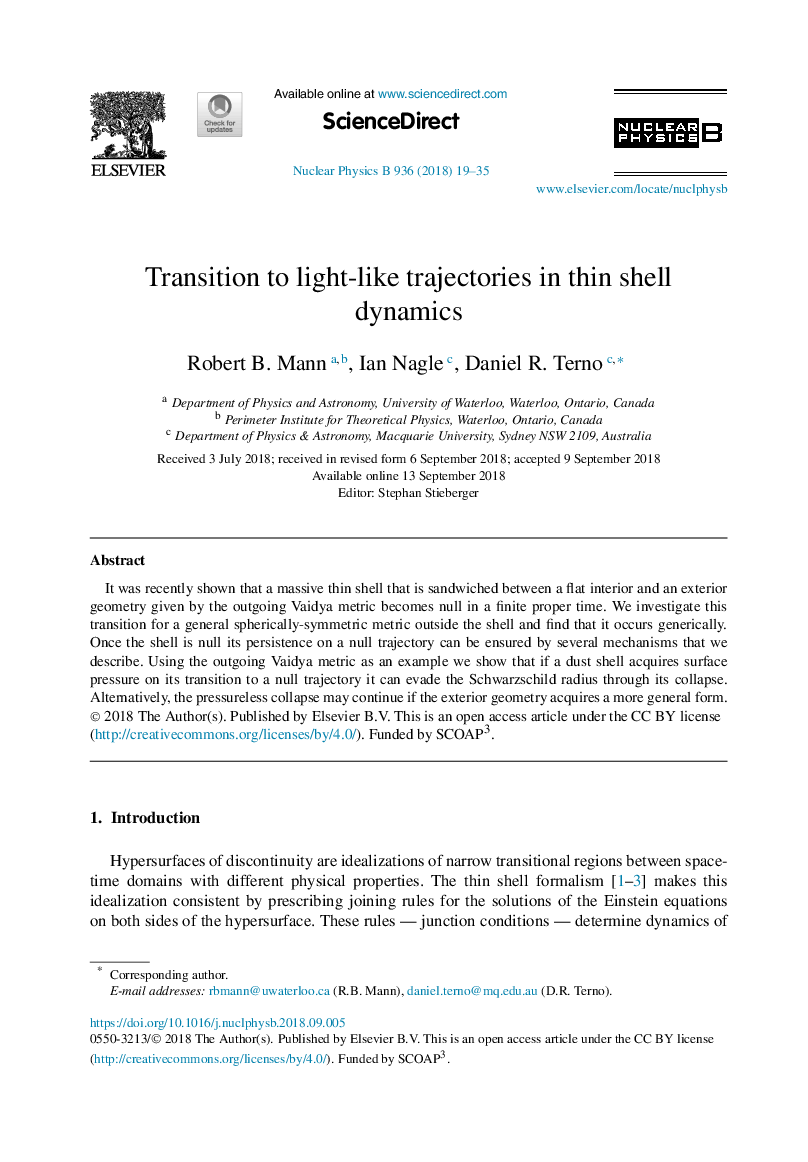| Article ID | Journal | Published Year | Pages | File Type |
|---|---|---|---|---|
| 10156513 | Nuclear Physics B | 2018 | 17 Pages |
Abstract
It was recently shown that a massive thin shell that is sandwiched between a flat interior and an exterior geometry given by the outgoing Vaidya metric becomes null in a finite proper time. We investigate this transition for a general spherically-symmetric metric outside the shell and find that it occurs generically. Once the shell is null its persistence on a null trajectory can be ensured by several mechanisms that we describe. Using the outgoing Vaidya metric as an example we show that if a dust shell acquires surface pressure on its transition to a null trajectory it can evade the Schwarzschild radius through its collapse. Alternatively, the pressureless collapse may continue if the exterior geometry acquires a more general form.
Related Topics
Physical Sciences and Engineering
Mathematics
Mathematical Physics
Authors
Robert B. Mann, Ian Nagle, Daniel R. Terno,
